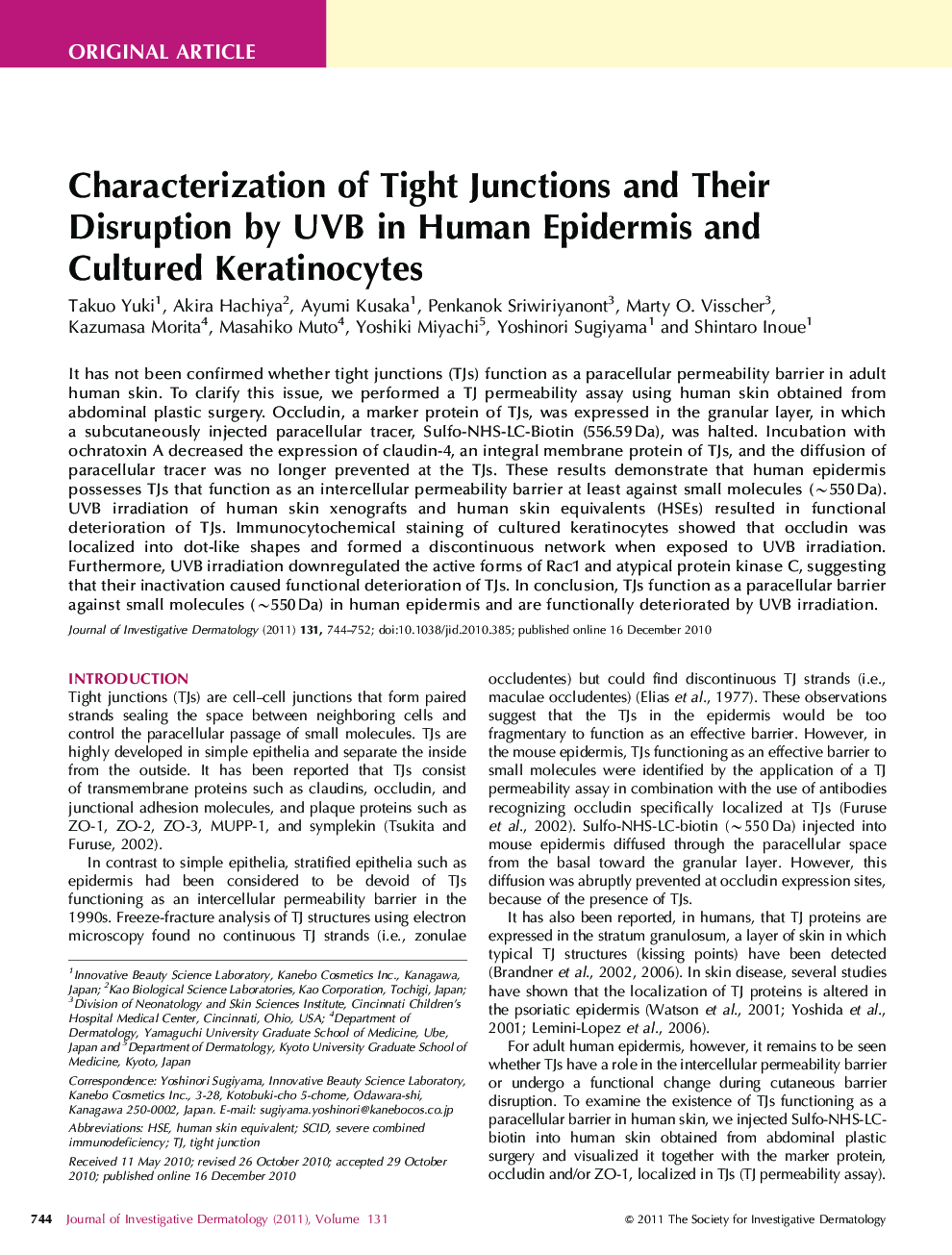| کد مقاله | کد نشریه | سال انتشار | مقاله انگلیسی | نسخه تمام متن |
|---|---|---|---|---|
| 3215731 | 1203541 | 2011 | 9 صفحه PDF | دانلود رایگان |

It has not been confirmed whether tight junctions (TJs) function as a paracellular permeability barrier in adult human skin. To clarify this issue, we performed a TJ permeability assay using human skin obtained from abdominal plastic surgery. Occludin, a marker protein of TJs, was expressed in the granular layer, in which a subcutaneously injected paracellular tracer, Sulfo-NHS-LC-Biotin (556.59 Da), was halted. Incubation with ochratoxin A decreased the expression of claudin-4, an integral membrane protein of TJs, and the diffusion of paracellular tracer was no longer prevented at the TJs. These results demonstrate that human epidermis possesses TJs that function as an intercellular permeability barrier at least against small molecules (∼550 Da). UVB irradiation of human skin xenografts and human skin equivalents (HSEs) resulted in functional deterioration of TJs. Immunocytochemical staining of cultured keratinocytes showed that occludin was localized into dot-like shapes and formed a discontinuous network when exposed to UVB irradiation. Furthermore, UVB irradiation downregulated the active forms of Rac1 and atypical protein kinase C, suggesting that their inactivation caused functional deterioration of TJs. In conclusion, TJs function as a paracellular barrier against small molecules (∼550 Da) in human epidermis and are functionally deteriorated by UVB irradiation.
Journal: Journal of Investigative Dermatology - Volume 131, Issue 3, March 2011, Pages 744–752